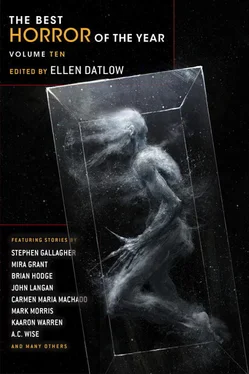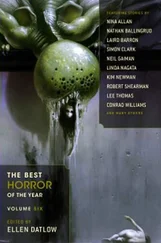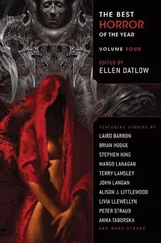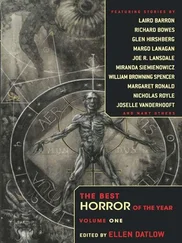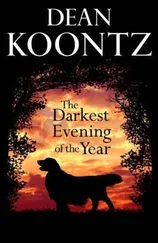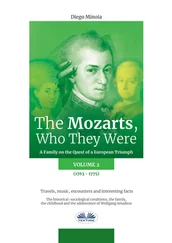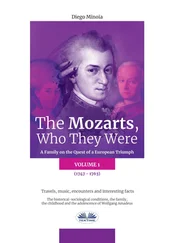Каарон Уоррен - The Best Horror of the Year Volume Ten
Здесь есть возможность читать онлайн «Каарон Уоррен - The Best Horror of the Year Volume Ten» весь текст электронной книги совершенно бесплатно (целиком полную версию без сокращений). В некоторых случаях можно слушать аудио, скачать через торрент в формате fb2 и присутствует краткое содержание. Город: New York, Год выпуска: 2018, ISBN: 2018, Издательство: Night Shade Books, Жанр: Ужасы и Мистика, на английском языке. Описание произведения, (предисловие) а так же отзывы посетителей доступны на портале библиотеки ЛибКат.
- Название:The Best Horror of the Year Volume Ten
- Автор:
- Издательство:Night Shade Books
- Жанр:
- Год:2018
- Город:New York
- ISBN:978-1-5107-1667-4
- Рейтинг книги:4 / 5. Голосов: 1
-
Избранное:Добавить в избранное
- Отзывы:
-
Ваша оценка:
- 80
- 1
- 2
- 3
- 4
- 5
The Best Horror of the Year Volume Ten: краткое содержание, описание и аннотация
Предлагаем к чтению аннотацию, описание, краткое содержание или предисловие (зависит от того, что написал сам автор книги «The Best Horror of the Year Volume Ten»). Если вы не нашли необходимую информацию о книге — напишите в комментариях, мы постараемся отыскать её.
The Best Horror of the Year Volume Ten — читать онлайн бесплатно полную книгу (весь текст) целиком
Ниже представлен текст книги, разбитый по страницам. Система сохранения места последней прочитанной страницы, позволяет с удобством читать онлайн бесплатно книгу «The Best Horror of the Year Volume Ten», без необходимости каждый раз заново искать на чём Вы остановились. Поставьте закладку, и сможете в любой момент перейти на страницу, на которой закончили чтение.
Интервал:
Закладка:
The screen returns to the professor. The interviewer asks how the police reacted. Professor Price says, They were very impressed. This was when the Church still commanded considerable respect. For an archbishop to intervene personally in a situation was unusual. The cops were willing to give him a lot more leeway than they would in a similar situation today. Although, she adds, to his credit, one of the officers still wrote a fairly extensive report on the incident, which is how we know about it.
The interviewer asks if there was any follow-up. The professor shakes her head. She says, The report was filed and forgotten. However, she was able to track down one of the Merryweathers’ former neighbors. This person, who did not want to be identified, said that the morning after the police made their incursion, they watched Agatha Merryweather led down the front steps of her house by a priest and a nun. She appeared to be wearing a straightjacket. The priest and nun helped her into the backseat of a black car. The black car drove off, and that was the last the neighbor saw of Agatha. Professor Price says she asked the neighbor if they remembered the date of Agatha’s departure. As a matter of fact, the neighbor said, they did. It was Halloween.
What were the priest and nun doing there? the interviewer asks. The professor says she can only guess. She’s been in touch with the Archdiocese of Newark, not to mention, Harrison Law, who currently holds a position at the Vatican. Neither was any help. The Archdiocese claims to have no record of contact between the former Archbishop and the Merryweathers. Harrison Law says that the assistance he offers those under his pastoral care comes with a guarantee of utter discretion.
The interviewer says, It sounds like the Church was a dead-end. Which leads me to ask, How did you learn about Agatha Merryweather in the first place? And what led you to connect her to the woman who left the train outside Huguenot?
Professor Price says, Bear with me. She holds up a photocopy of a drawing. It shows the face of a young woman with dark eyes and long black hair, and bears a strong resemblance to the photograph of Agatha Merryweather. She says, This was made by a police sketch artist in Wiltwyck, New York, after several of the passengers who were on that train called the police to express their concern. All of their reports agreed that the woman was wearing a straightjacket, and was accompanied by a priest and a nun. The professor lowers the piece of paper. She says, The passengers also agreed that Agatha and her companions were met by another pair of men, also priests, outside the entrance to the mine formerly run by the Joppenburgh Cement Company. The police might have passed off the reports as not worth more than a call to St. John’s in Joppenburgh to ask if their priests had met someone off the Wiltwyck train. However, one of the reports came from a local judge, who insisted on a more thorough investigation. This, Professor Price says, is how they found the bodies.
Bodies? the interviewer asks. The professor is replaced by a series of black and white crime-scene photographs. They show a pair of naked men lying side by side next to the wall of a cave. Their legs are together, their arms are at their sides, and their eyes are shut. Their throats have been torn open, down to the bone. There are long scratches on their faces and their arms. The wall beside them is splashed with blood, as is the floor near them. In voiceover, Professor Price says, These two were found by the officers who were sent to check the site. As you can see, their clothes, any jewelry they might have been wearing, whatever might have identified them, has been removed. The evidence was that they were killed after a brief, fierce struggle. Obviously, the cause of death was the wound to each man’s throat. The medical examiner said their throats had been ripped apart by a set of teeth, most likely human, though he noted irregularities in the bite marks upon which he failed to elaborate. After their deaths, the men were stripped and positioned together. Whoever had tended to the corpses had been careful to leave no traces of themselves. As for the assailant: a scattering of bloody hand- and footprints were found near the top of the tunnel wall, nearly twelve feet up. They retreated into the mine for twenty-five feet, and stopped.
The professor returns to the screen. The interviewer asks her what exactly she’s saying. Professor Price says she doesn’t know. For eight days, the police conducted a substantial investigation. The murders were front page news in papers up and down the Hudson Valley. They were the lead story on all the local TV news broadcasts. There was a lot of concern that a homicidal maniac or maniacs was on the loose. One of the local papers speculated that the killings might be the work of a Manson-style cult. Huguenot was quite the counterculture mecca at this time. After a few days, the story moved from the front page to page two or three, but it was still very much news. A couple of the passengers on the train thought the dead men were the priests who had helped Agatha Merryweather off the train, but none of the local clergy admitted to knowing them. The sketch I showed you was published in the paper, shown on TV. This was how Agatha Merryweather was identified as the woman on the train. A couple of her former neighbors saw the sketch and called the local police to say they recognized her. The police went to the Merryweathers’ house but it was empty, the couple nowhere to be found. None of the neighbors had seen them leave. Apparently, the police did some kind of follow up with the Church, but they don’t appear to have had any more success than I did.
The professor says, In Huguenot, the police searched for Agatha in surrounding homes and buildings, and turned up nothing. They brought in dogs in hopes they might discover something. Two of the dogs pissed themselves, then started fighting with such ferocity their handlers needed help separating them. A third dog went into the mine a hundred yards, sat, and started to howl. The police had dismissed the bloody hand- and footprints on the wall as some kind of red herring; although they hadn’t been able to explain why the false lead had been placed in such an outlandish place. Now, they decided to search the mine. They broke out the flashlights and set off into its tunnels in pairs.
The interviewer asks if they found anything. Professor Price says, They did. In one of the mine’s side passages, the police came across what was left of a straightjacket. It was stiff with dried blood, and had been ripped open by its wearer. More officers were brought in to assist in the effort. Several reported hearing sounds ahead of or behind them, footsteps, mostly, though one pair of officers described something growling close to them. The police said they were concentrating their efforts on the mine, which was where they were reasonably certain their suspect was hiding. And then… nothing. The search was called off.
Called off? the interviewer asks. The professor nods. Why? the interviewer asks. The professor says, No one knows. The mine remained the best lead. There was no trace of Agatha Merryweather anywhere else. When they heard about it, the local papers tried to get to the bottom of what had happened, but the police stonewalled them. It didn’t take the papers long to move onto other stories. Since that time, no more has been done to determine Agatha Merryweather’s fate.
Really? the interviewer asks. The professor says, I’ve made a pretty through search. There are stories the local kids tell, legends, but nothing in the way of formal investigation. Oh, Professor Price says, but I did learn one more odd fact in the course of my research. The bodies of the murdered men that were left at the mine’s entrance? Three days after they arrived at the county morgue, they were claimed, by a John Smith, of Manhattan. The interviewer says, An alias? Professor Price nods. She says, I haven’t talked to every John Smith who was living in the city at that time, but I’m pretty confident whoever came for those corpses did so under a fairly blatant pseudonym. Why? the interviewer asks. The professor says, That question comes up a great deal, doesn’t it? If we’re going to answer it, then I think we need to start with the place where Agatha Merryweather was last seen. We have to go to the mine.
Читать дальшеИнтервал:
Закладка:
Похожие книги на «The Best Horror of the Year Volume Ten»
Представляем Вашему вниманию похожие книги на «The Best Horror of the Year Volume Ten» списком для выбора. Мы отобрали схожую по названию и смыслу литературу в надежде предоставить читателям больше вариантов отыскать новые, интересные, ещё непрочитанные произведения.
Обсуждение, отзывы о книге «The Best Horror of the Year Volume Ten» и просто собственные мнения читателей. Оставьте ваши комментарии, напишите, что Вы думаете о произведении, его смысле или главных героях. Укажите что конкретно понравилось, а что нет, и почему Вы так считаете.
